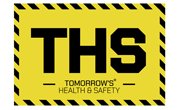Stuart Waine of Spry Fox Networks says that digital transformation in healthcare is long overdue, and that robust critical infrastructures and seamless mobile connectivity are fundamental components
Assuring reliable mobile coverage in the NHS has always been its Achilles heel. The service, through no fault of its own, is continually faced with understaffing and underfunding issues. Medical professionals are under constant pressure to increase their patient quota without compromising patient outcomes, and it is permanently in the public eye from a political standpoint. Covid-19, however, took these long-term challenges to a whole new level. Online clinics, digital consultations and remote/hybrid working had to be enabled in very short timeframes. Access to vital services for the most vulnerable had to be assured. On the wards, keeping track of potentially lifesaving ICU equipment and knowing the whereabouts of doctors, staff nurses and intensive care teams became paramount. Even though the services provided by the NHS over the last two years have been truly commendable, what became apparent within just a few weeks of the pandemic gaining foothold, was the antiquity of the digital infrastructures underpinning routine operations and day-to-day communications in many of their hospital buildings.
The magnitude of the NHS is its downfall from a mobile coverage perspective
In the wake of the crisis, robust critical infrastructure and assured mobile connectivity in healthcare has progressed from being an ‘aspiration’ for the not-so-distant future to a fulcrum needed here and now for basic operability. The sheer magnitude of the NHS, in many ways, is its downfall when it comes to digital transformation because of the multiple stakeholders and suppliers involved. Whilst the NHS has recently undergone a national Wi-Fi project covering more than 90% of its facilities, it still hasn’t been able to overcome its mobile connectivity quandary. And this in turn impacts digital transformation because with any Wi-Fi network, no matter how sophisticated, Quality of Service (QoS) is dependent on the proximity of the router(s) in relation to the devices/technologies they are powering and the further away, the weaker the signal strength, particularly if there are corners, elevators or long corridors involved. Not only that, Wi-Fi-only comms networks are particularly vulnerable to malware and cyber-attacks compared with their cellular counterparts.
Poor mobile coverage impacts day-to-day communications
If the NHS is to achieve the patient outcome targets stipulated in its digital transformation programme of 2019 by leveraging IoT and the technologies it powers, reliable mobile connectivity must also be factored into the process. The trigger mechanism for existing IoT systems and applications is cellular, 4G to be precise, due to its universal availability and because, with encryption, it is better protected against cybercrime.
Although reliable mobile coverage is integral to smart healthcare, it is also pivotal to day-to-day communications, especially now that the rollout of on-duty smartphones has rightfully been accelerated. According to industry estimates, around 85% of doctors are now dependent on smartphones/tablets to access medication details, with around 75% using said smartphones to access critical information. The paradox however is that more than 80% of medical professionals face poor mobile signal challenges when at work. Not only does it render their on-duty devices unfit for purpose, the lack of a reliable mobile phone signal directly impacts the quality of treatments/prognoses and potentially the number of lives.
With NHS facilities already renowned for being mobile dead spots and digital dependency growing, frustrations among medical staff and process inefficiencies (on account of them being manual and not automated) have only been magnified by the pandemic. You also need to consider the poor coverage situation from the patient’s perspective as the total number of calls made by them on a daily basis has increased by 25% since the outbreak of Covid-19. And this is putting struggling comms infrastructures under even more strain. The digital services introduced during the pandemic together with flexible working, are here to stay meaning that the mobile coverage situation in many healthcare establishments needs addressing as a matter of urgency.
So, what are the root causes of poor mobile coverage in healthcare? Building layouts and the raw materials from which they are constructed mainly. The average hospital comprises sprawling campuses, complex structures, kilometres of internal corridors, not to mention stairwells, research labs, clinical theatres, CCTV control rooms, A&E admissions etc which are often situated below street level and therefore void of a mobile phone signal.
Ofcom approved supplementary telco equipment is needed
The only way to provide the levels of coverage is by taking the outside network indoors using supplementary equipment such as mobile repeaters. You also need to assess the outdoor coverage situation as this will determine the type and number of repeaters needed and the services they are supporting. Substandard mobile coverage in the NHS is unacceptable in a world driven by tech especially when it impacts patient outcomes and potentially puts lives at risk. Now that OFCOM has relaxed the rules pertaining to the use of mobile repeaters to improve in building mobile coverage assuring the levels of coverage needed is neither difficult nor expensive so long as said repeaters meet their specification.




















